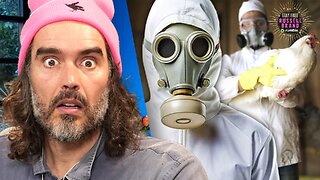Hope is the Thing with Feathers Analysis | Emily Dickinson
Welcome to our explainer video in which we'll dive into an analysis of "Hope is the Thing with Feathers" by Emily Dickinson.
"Hope is the Thing with Feathers" is a short but powerful poem written by Emily Dickinson in the 19th century. The poem uses a metaphor to describe hope as a bird with feathers. Let's explore the meaning behind this captivating piece of literature.
The Metaphor of Hope.
In the first line, Dickinson introduces the central metaphor: "Hope is the thing with feathers." Instead of directly stating what hope is, she compares it to a bird. By doing so, she gives hope a tangible and relatable form, allowing us to better understand its essence.
The Significance of Feathers.
Dickinson's choice of the word "feathers" is also significant. Feathers are traditionally associated with birds and flight. They symbolize freedom, lightness, and grace. By attributing feathers to hope, Dickinson suggests that hope has the power to lift us up and provide solace during difficult times.
The Resilience of Hope.
The next line says, "That perches in the soul." Here, the poet describes hope as something that finds a resting place within our souls. This implies that hope is not fleeting or superficial but has the ability to take root deep within us. It emphasizes the resilience and endurance of hope in the face of adversity.
The Song of Hope.
Dickinson continues, "And sings the tune without the words." Here, she portrays hope as a bird that sings a melody without words. This highlights the intangible nature of hope's message. Hope does not require explicit language or rational understanding; it communicates directly to our hearts and spirits.
The Power of Hope.
In the final lines, Dickinson writes, "And never stops at all." This phrase emphasizes the relentless nature of hope. It does not waver or cease, regardless of the circumstances. Even in the darkest of times, hope persists, providing comfort and inspiration.
Overall Message.
In "Hope is the Thing with Feathers," Emily Dickinson captures the essence of hope through the metaphor of a bird with feathers. She portrays hope as a resilient and unwavering force that can uplift us, even in the most challenging situations. It reminds us that hope is a constant companion, always present and ready to guide us through life's hardships.
Conclusion.
We hope this analysis has shed light on the profound meaning behind Emily Dickinson's poem. "Hope is the Thing with Feathers" reminds us to hold onto hope, for it has the power to sustain us and bring us strength. Thank you for watching!
-
 DVR
DVR
Barstool Yak
2 hours agoThe Yak with Big Cat & Co. Presented by Rhoback | The Yak 6-10-24
3.21K3 -
 54:59
54:59
Ben Shapiro
3 hours agoEp. 1982 - Israel Pulls Off MIRACLE Rescue Of 4 Hostages…And The Left Laments
34K63 -
 43:38
43:38
Bright Insight
2 hours agoYou Won’t Believe This Disturbing Gobekli Tepe Update
5.46K63 -
 LIVE
LIVE
The Kevin Trudeau Show
1 hour agoThe Kevin Trudeau Show
134 watching -
 1:09:31
1:09:31
Russell Brand
4 hours agoBird Flu Pandemic SCAM?! New Lockdowns + Vaccines!
102K238 -
 2:56:24
2:56:24
The Charlie Kirk Show
3 hours ago2016 Redux + George Janko On-Set | Habba, Kassam, Janko | LIVE 6.10.24
42.3K7 -
 LIVE
LIVE
SilverFox
14 hours ago🔴LIVE - Elden Ring RANDOMIZER Mod - Part 2
389 watching -
 59:36
59:36
The Dan Bongino Show
6 hours agoOperation DUMP Joe Biden Has Begun (Ep. 2267) - 06/10/2024
354K977 -
 1:41:30
1:41:30
Steven Crowder
6 hours agoTrump Trial Turmoil as Juror’s Cousin F*cks Deep State | GUEST: Breanna Morello
252K437 -
 1:47:52
1:47:52
Mostly Sports With Mark Titus and Brandon Walker
17 hours agoMostly Sports With Mark Titus and Brandon Walker Presented by Jägermeister | EP 185 | 6.10.24
34.1K